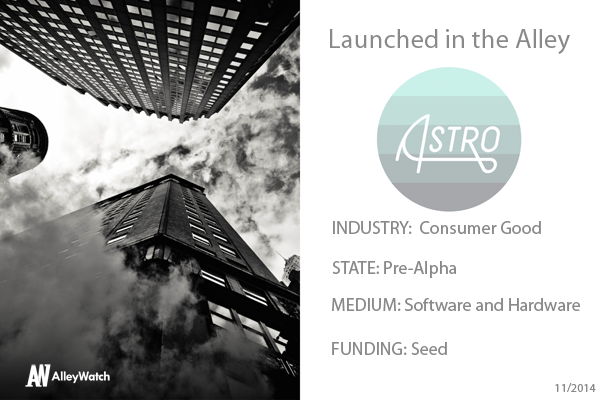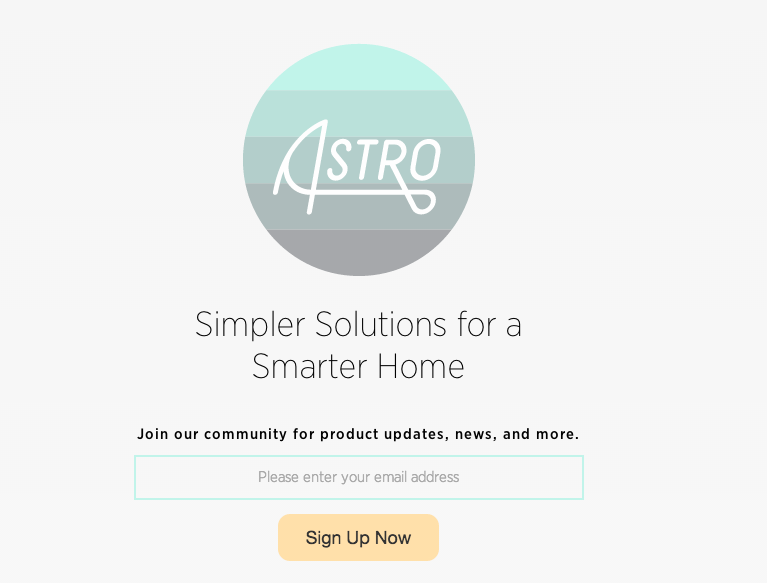Shouldn’t connected devices be easy to connect? That’s the idea behind Astro, a company that’s part of the latest class at the R/GA Connected Device Accelerator powered by Techstars.
Astro is creating an automated home system of devices that require no installation, no new infrastructure, and no new wireless networks, making theirs the simplest platform on the market.
Here’s a Twist: their first product is as simple to install as a lightbulb. In fact, it is a lightbulb, and it automates a home’s entire suite of appliances, requiring no new wireless networks. That simple. That smart. No tech degree required for installation. Founder and CEO Shaun Springer talks about his experience with the accelerator, so far, and the companies plan to take over the home, if not the connected world.
Tell us about the decision to apply for R/GA Accelerator and how has the experience been thus far?
One of the most appealing factors of the program is the chance to surround ourselves with 60+ makers, designers, and creators who have a passion for building great products. Rather than rent an office in a building with just the six of us, we wanted to be a part of a group that can inspire and challenge us in new ways.
Additionally, we know that building a great product is only half the battle. The opportunity to work with a world-class branding and design agency in R/GA gives us extra resources to transform our product into a great brand.
So far, it’s been a whirlwind of information and feedback from R/GA and Techstars, the mentors, and the rest of the cohort. It’s been a positive challenge for our team to process everything and keep pushing forward towards getting our product line ready for demo day.
Tell us about your product.
We are working on our first product line, Twist, which is a series of smart home devices that leverage the form factor of a light bulb to give consumers an easy-to-use, installation-free connected home.

How is it different?
While the broader smart home industry is concerned with complex integrations and configuration options, we are focused on developing easy-to-use devices in a familiar form factor to provide the most value to the end user. This enables us to deliver a series of simple, accessible, and affordable smart home products.
What market are you attacking and how big is it?
Our primary market is the rising smart home industry, currently valued at $7 billion and growing at a CAGR of 25%, estimated to be worth $20 billion by 2020.
What is the business model?
We sell solutions-oriented devices focused on mass adopters by lowering the barriers to entry into the smart home market. Once the user is in our ecosystem, we can upgrade their experience with accessories and software enhancements that make the connected home smarter and easier to use.
Ideally, where would you like your product to be sold?
Initially, we plan to sell direct-to-consumer, but over time, we want distribution into home goods stores where the mass consumer shops, rather than home improvement stores like Home Depot and Lowes.
What are the milestones that you plan to achieve within six months?
We want to finalize our prototypes and manufacturing process so that we are ready to launch a pre-order campaign for our first product line.
If you could be put in touch with one investor in the New York community who would it be and why?
Eric Hippeau. His experience leading and investing in companies with mass-market appeal would make him a great partner for us to work with.
What is your take on the current scene in New York today?
New York is rapidly closing the talent gap with Silicon Valley, particularly with respect to hardware. We are no longer known for just fin-tech.
What are you looking forward to doing most in NYC during this upcoming winter?
Leaving the city to get in some skiing and snowboarding.




